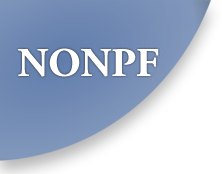Examining the Extent of Nurse Practitioner Practice at a Large Academic Medical Center: Recommendations for Full Professional Practice
An anonymous survey was sent electronically to 295 NPs at this institution to ascertain the level of engagement with the five domains of advanced practice as outlined by the Strong Model. The response rate was 36% and included NPs in administrative and clinical roles across a variety of settings. More than 50% of the participants had been in overall practice for greater than 5 years and were between the ages of 30-39 years. The findings suggest that NPs consistently ranked themselves highest in the direct comprehensive care (very great/ great extent: 84%), support of systems (very great/ great extent: 58%) and education (very great/ great: 42%) domains while consistently ranking themselves lower in the research (little/ not at all: 71%), publication and professional leadership (little/ not at all: 64%) domains. The implications for practice are significant because the findings suggest that NPs in this AMC are potentially being underutilized.
The findings will provide a framework for further exploration of NP practice and alignment with the tenants of the Strong Model and the National Organization of Nurse Practitioner Faculties (NONPF) NP Competencies. The author posits that actualization of the domains of advanced practice as delineated in the Strong Model are critical for optimizing NP practice in the study institution.

